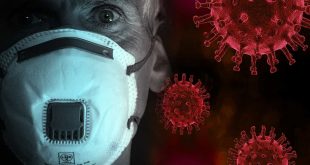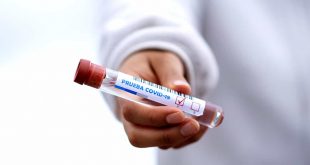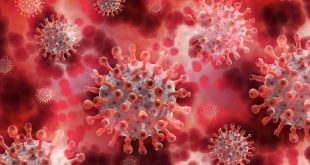Demonstrators protest the extension of the emergency Safer at Home order by State Governor Tony Evers to slow the spread of the COVID-19, outside the State Capitol building in Madison, Wis., on April 24, 2020.
SHANNON STAPLETON/Reuters
Several Republican-led U.S. states are rapidly lifting coronavirus containment measures while an array of right-wing groups – some with ties to President Donald Trump – are pushing a nationwide campaign of protests calling for mass reopenings.
Other states and public-health experts warn the country still has nowhere near enough capacity for testing and isolating COVID-19 outbreaks to start a large-scale rollback of measures to fight the virus.
The developments portend a widening gulf between the majority of states, which are maintaining physical distancing, and a substantial minority that are rushing to reopen. They are also raising fears of a further explosion in infections just as the country has started to get the pandemic under control.
Georgia Governor Brian Kemp is moving most aggressively to lift restrictions. Barbershops, gyms and tattoo parlours reopened on Friday, while restaurants and theatres can resume business on Monday. Several other states, including Alaska, Florida, Mississippi, Oklahoma and Tennessee, have also started reopening.
Canadians brace for a summer like no other due to COVID-19 restrictions
Ottawa confirms 75-per-cent rent relief for small businesses hit by pandemic
“We’re probably going to have to see our cases continue to go up,” Mr. Kemp admitted this week, but said he would forge ahead anyway. “We’re in a good spot.”
Many business owners in his state expressed alarm, and said they would stay closed.
Hugh Acheson, the Canadian chef and TV cooking show judge who owns three restaurants in Atlanta and Athens, Ga., said it would be reckless to reopen while the state’s testing rate remains around one per cent, meaning officials do not even know how widespread the disease is.
“They are asking people who are desperate to make rent and support their children to go back to unsafe working conditions to prove financial viability in this state and recoup a couple of tax dollars,” Mr. Acheson said in an interview. “That’s just not worth it.”
But other businesses said they had to reopen because the porous social safety nets of the country and the state cannot keep them financially solvent.
At the Good Look Barbershop in Marietta, Ga., owner Y’Kheyo Underwood said he did not have enough funds to pay both his staff and his rent. Because his barbers are independent contractors, they could not collect regular unemployment benefits, he said.
“It’s been really tough,” he said. “I have to come back and at least cut those few clients who are willing to come in and take the risks themselves. I have to take that little bit of money to help out with bills.”
Other states are moving far more gradually. California took its first tentative step to loosen restrictions this week, allowing hospitals to resume elective surgery. New York is planning to enlist 35,000 students in the public university system as contact tracers, charged with finding anyone who has come into contact with infected people and ensuring they get tested.
Matthew Fermin, who owns Santiago’s Beer Garden in East Harlem, embraced such caution. “What’s the point of being open if any of my employees are not alive?” he said. “I’d rather play it safe and wait a little longer.”
State capitols, meanwhile, have been hit by gun-toting, Confederate-flag-waving protesters demanding an end to physical distancing.
Among the groups promoting the demonstrations is Convention of States. The conservative organization has been partly bankrolled by billionaire Robert Mercer, who backed Mr. Trump’s 2016 campaign and was once the patron of his former chief strategist Steve Bannon. Eric O’Keefe, who chairs Convention of States’ parent group, is an associate of the Koch family of Republican mega-donors.
Former Trump campaign adviser Stephen Moore of FreedomWorks, a Tea Party group that is also promoting the protests, said in a YouTube interview last week that an unnamed “big donor” had worked with him on a demonstration in Wisconsin. One of the organizers of a protest in Michigan, meanwhile, was Meshawn Maddock, an adviser to the President’s re-election campaign.
Mark Meckler, the president of Convention of States, said in an interview that he has “zero” communication with Mr. Trump’s circle over the shutdown protests, and his group has received no money from the Koch organization. Mr. Meckler said people should be able to decide voluntarily whether they want to prevent the spread of COVID-19.
“Nobody should be kept anywhere,” Mr. Meckler said. “We live in a free, self-governing country, and then it’s up to individuals what they want to do to protect themselves.”
In Phoenix this week, protesters were met by a group of nurses wearing their uniforms and N95 respirator masks and standing silently between the screaming crowd and the Arizona state legislature.
“I wish they could see this pandemic from my patients’ perspective, from the perspective of these people who are alone and scared and dying,” Lauren Leander, one of the nurses who faced the demonstrators, told The Globe and Mail.
Ms. Leander treats COVID-19 patients full-time in an intensive-care unit. Because of necessary isolation measures, many of her charges have had to say their final goodbyes to friends and family over FaceTime, on phones and iPads held up by nurses, she said. In cases where entire families have contracted the virus, one patient will sometimes emerge from a coma to discover a loved one died in the interim.
Mr. Trump himself has vacillated. His own administration’s guidelines call for extensive testing and contact tracing before a gradual reopening. But the President has also fanned the flames of protest, tweeting last week that people should “LIBERATE” Democratic states subject to stay-at-home orders.
To Leana Wen, a public-health expert at George Washington University, there was little doubt what the effect of swift reopenings will be.
“There’s a lag time between when people are exposed and when symptoms occur,” she said. “So nothing will happen for a few weeks, but then there will be a spike in cases, unfortunately followed by an increase in preventable deaths.”
Sign up for the Coronavirus Update newsletter to read the day’s essential coronavirus news, features and explainers written by Globe reporters and editors.
 The Argus Report Read about it!
The Argus Report Read about it!




